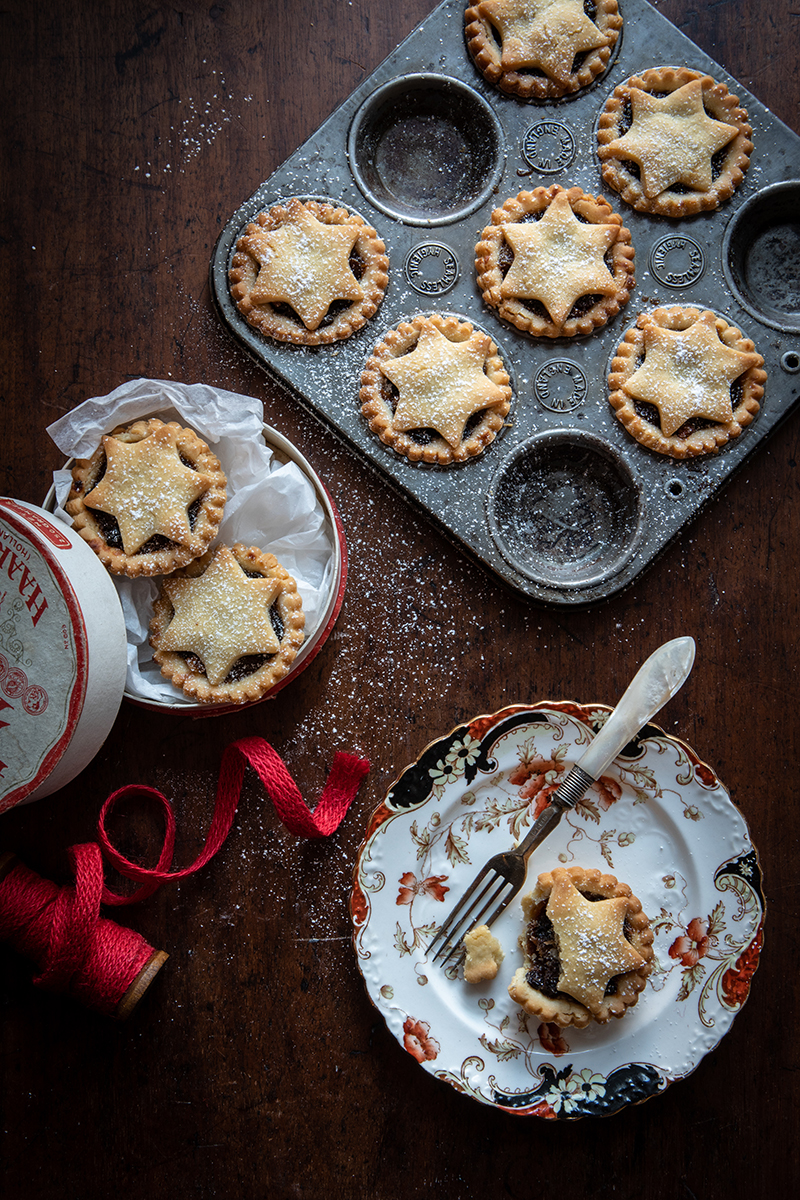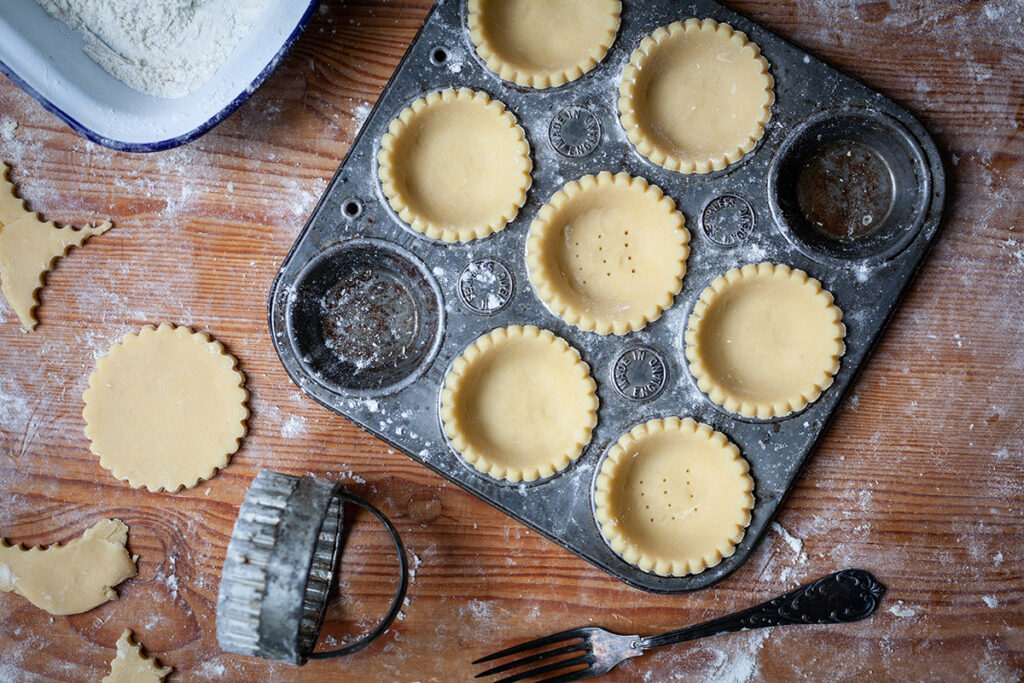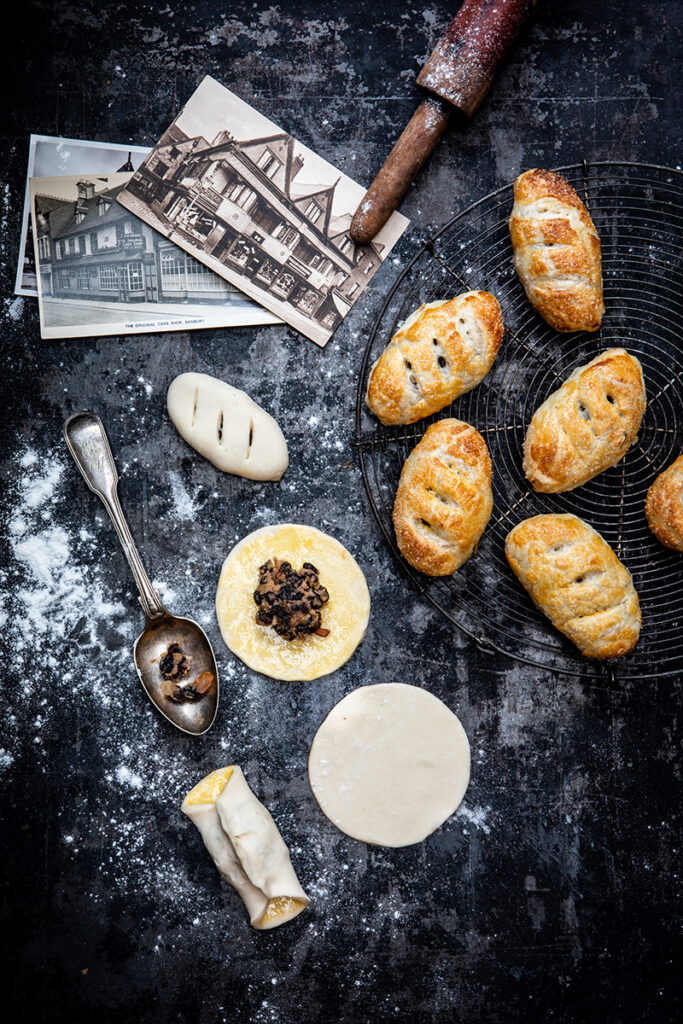
02 Oct Mincemeat & Mince pies
Mincemeat, the filling of mince pies, is an ancient recipe that gives you a taste of Medieval times gone by when the usage of this mixture was widely common for sweet as well as savoury dishes. That is if you were well off, dishes with these rich ingredients were the privilege of the very rich and one of the first recipes dates from the 14th century scroll presumably written by the chef of King Richard II.
Mincemeat is best made at least a month in advance so that the flavours can mature. Some people even start making their mincemeat as soon as Autumn kicks in for a well-matured mixture. You can use it for different recipes: as a filling for Mince pies of course but also for Eccles cakes and a couple of other British bakes you’ll find in my book Oats in the North, Wheat from the South (The British Baking Book – Brits Bakboek)
The combination of fruits and spices for mincemeat is often diverse, but raisins, currants and candied lemon, cedro (a huge lemon with a thick peel) and/or orange peel are standard. Some old recipes also contain prunes, dates, figs or candied ginger. Spices are usually cinnamon, cloves, mace and nutmeg. There is always grated apple or pear and sometimes also lemon or orange juice – mostly from Seville oranges (these are very acidic and also the basis for English marmalade – see recipe here).
You can make the mincemeat in this large quantity and store it in the fridge for up to 6 months in sterilised preserving jars. But feel free to make less, to suit your mincemeat needs.
Mince pie
When the end of the year is near you will be getting the yearning for Mince pies if you’re British no doubt, but if you are not it is a nice discovery and a lovely new Christmas tradition for your family. Today when we think of mince pies we think of the tiny little tarts, usually with star-shaped pastry lids and I love those because they are so festive, but ancient mince pies looked very different and they weren’t small, they could be huge and they usually contained meat… yes this is why the mixture is called mince-meat!
A recipe from 1615 contains the meat of a whole leg of lamb but states that beef or veal would do as well. Older, Medieval recipes sometimes contain fish sso the pies can be eaten on fish days. And while reading this you might think this is weird, in the past we had a different relationship with food, we didn’t class sweet as something that had to be separated from savoury, so meat and fish dishes could contain spics, dried or candied fruits, sugar and or honey – we still see this frequently in Indian, Asian and Arabic cuisines. In fact meaty mince pies were still firmly on the table at the start of the 20th century.
You can find a recipe for a meaty mince pie in my book and trust me when I tell you it is delicious, but the recipe below is meat-less so you can make this mixture far in advance to mature (don’t use meat when making it far in advance as the meat will rot!)
For making mince pies, use your favourite pastry recipe, I prefer a fine shortcrust but puff-pastry works too – in fact in victorian times mince pies were often made with a base of shortcrust and a top of puff-pastry. They didn’t have a star-shaped lid, they tended to be oval according to engravings in cookery books from the period, and they were a little larger. I like them small as they are today as a mince pie is a rich little thing.
Finally, wouldn’t they make a lovely home-made Christmas gift?
Ingredients
- 175 g (6 oz) currants
- 175 g (6 oz) large dark raisins
- 175 g (6 oz) stewing apple, coarsely grated
- 50 g (1¾ oz) candied orange peel
- 50 g (1¾ oz) prunes, pitted and chopped
- 115 g (4 oz) shredded suet or butter, frozen and grated
- 115 g (4 oz) soft brown sugar
- ½ tsp ground cinnamon
- ½ tsp ground mace
- ½ tsp ground cloves
- ¼ tsp ground nutmeg
- ¼ tsp ground ginger
- pinch of sea salt
- ½ lemon or Seville orange, juice and zest
- 250 ml (9 fl oz) brandy or rum (or half sherry, half rum)
PREP TIME
10 minutes
COOK TIME
0 minutes
makes
880 g/1 lb 15 oz
Instructions
Put all the ingredients for the mincemeat in a bowl and add the brandy or rum to cover the fruit. Stir well, then let it rest overnight. The next day, stir again and then divide among sterilised preserving jars.
Use for Mince pies or other bakes.



No Comments